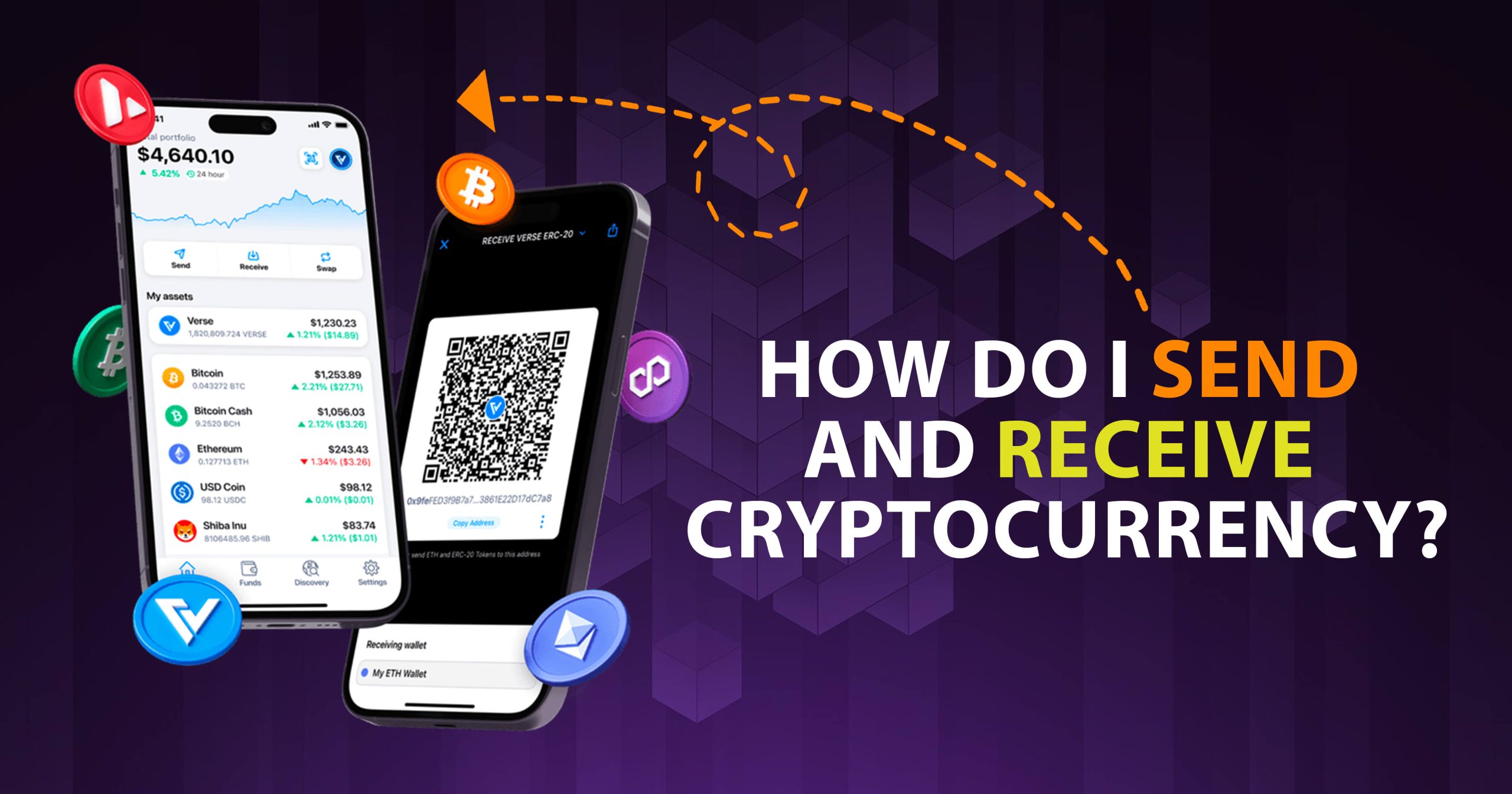Cryptocurrency is taking the world by storm, with its potential to revolutionize the way we conduct transactions in a digital age. Today, we’ll guide you through the process of Send and Receive Cryptocurrency. If you’re new to this fascinating digital world, don’t fret; I’ll break it down into simple, digestible steps.
Read Our Latest Blog: How to Send Bitcoin to Another Wallet? BTC [2023]
How Do I Send Cryptocurrency?
As more people are captivated by the world of cryptocurrency, knowing how to send this innovative form of digital currency becomes crucial. Here’s a step-by-step guide:
1. Select a Cryptocurrency Wallet

Start by setting up a digital wallet to store your cryptocurrency. Wallets come in various forms, including online platforms, mobile apps, and physical hardware wallets. Choose one that best suits your security needs and ease of use.
2. Acquire Cryptocurrency

Now it’s time to buy some cryptocurrency. This can be done on trusted exchanges such as Binance, Coinbase, or Kraken. After setting up your account, you can buy cryptocurrency using traditional money through a bank transfer, debit/credit card, or other accepted payment methods.
3. Proceed to Send

With your wallet loaded, you can now send cryptocurrency. Navigate to the ‘Send’ or ‘Transfer’ option in your digital wallet. The wallet will prompt you to enter the recipient’s address (a series of alphanumeric characters) and the amount of cryptocurrency you wish to send.
4. Cross-Check Details

Always double-check these details, especially the receiver’s address. Mistakes cannot be rectified!
5. Confirm Transaction

Lastly, approve the transaction. The wallet may require a password or a two-factor authentication code.
Please Note: Transaction times and fees can vary depending on network congestion and the currency you’re transferring.
How Do I Receive Cryptocurrency?
Just like sending cryptocurrency, receiving it is also a pretty straightforward process. Let’s break it down:
1. Have a Cryptocurrency Wallet

Just like sending, you’ll need a wallet. If you don’t have one yet, choose from online platforms, mobile apps, or hardware wallets.
2. Locate Your Wallet’s Address

In your wallet, find your address. It’s often found under ‘Receive,’ ‘Request,’ or ‘Deposit.’ The address is a long alphanumeric string, unique to your wallet.
3. Share Your Address

Give this address to the person sending you cryptocurrency. You can easily copy and paste it, but be diligent – a small error can result in your funds going astray. For additional security, use a QR code if your wallet supports it.
4. Wait for Transaction to Process

After the sender has initiated the transfer, wait for your funds to arrive. Times can vary, but you’ll usually see the pending transaction appear in your wallet almost immediately.
5. Confirm Receipt

Once the transaction is confirmed on the blockchain, the funds are officially yours to spend!
Remember, while transacting in cryptocurrency, security is key. Always use trusted platforms, double-check addresses, and never share sensitive information.
Conclusion
There you have it! With these simple steps, you can now Send and Receive Cryptocurrency with ease. This digital commodity is shaping the future of money and transactions, so it’s an exciting time to get involved. However, always remember to secure your wallet and transactions to safeguard against any potential mishaps.
frequently asked questions (FAQ)
Are there transaction fees in cryptocurrency?
Sending crypto usually involves network fees for miners verifying the transaction. Receiving cryptocurrency generally doesn’t incur fees.
Which wallets are recommended for crypto transactions?
Popular wallets include Coinbase, Binance, Trezor, and Ledger. Ensure your chosen wallet supports your specific cryptocurrency.
What are the best wallets to use for sending and receiving cryptocurrency?
The best wallet for you depends on your specific needs and the type of cryptocurrency you’re dealing with. However, some of the most popular ones include Coinbase, Binance, Trezor, and Ledger. Be sure to find a wallet that supports the particular cryptocurrency you intend to send or receive.
Are there fees involved in sending and receiving cryptocurrency?
Yes, usually there are network fees involved with sending cryptocurrency. The fees go to the miners who verify and confirm the transactions on the blockchain network. The cost can vary greatly, depending on the coin and network congestion. However, receiving cryptocurrency does not generally incur any fees.





![Read more about the article How to Send Bitcoin to Another Wallet? BTC [Wallet]](https://www.cryptocustomercare.org/wp-content/uploads/2023/10/Send-Bitcoin-to-Another-Wallet-300x150.jpg)